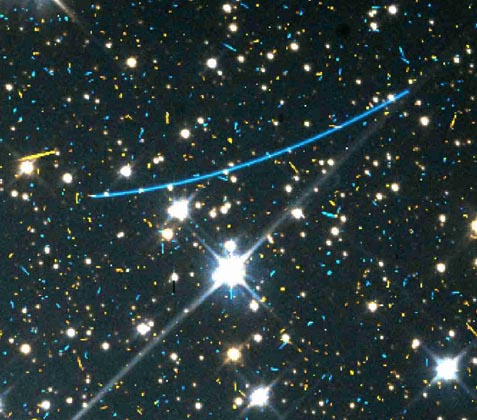Asteroids in the Distance

Explanation:
Rocks from space hit Earth every day.
The larger the rock, though, the less often Earth is struck.
Many kilograms of space dust pitter to Earth daily.
Larger bits appear initially as a bright
meteor. Baseball-sized rocks and ice-balls
streak through our atmosphere daily,
most evaporating quickly to nothing.
Significant threats do exist for rocks near
100 meters in diameter,
which strike Earth roughly every 1000 years.
An object this size could cause significant
tidal waves were it to strike an ocean,
potentially devastating even distant shores.
A collision with a
massive asteroid,
over 1 km across,
is more rare,
occurring typically millions of years apart, but
could have truly global consequences.
Many asteroids remain undiscovered.
In fact, the discovery of several was announced
last week; one is shown as the long blue streak in the
above photograph.
Such an
interplanetary collision
would not affect Earth's orbit so much as raise dust
that would
affect Earth's climate.
One likely result is a global extinction of
many species of life,
possibly dwarfing the ongoing
extinction occurring now.
Authors & editors:
Robert Nemiroff
(MTU) &
Jerry Bonnell
(USRA)
NASA Web Site Statements, Warnings,
and Disclaimers
NASA Official: Jay Norris.
Specific
rights apply.
A service of:
LHEA at
NASA /
GSFC
& Michigan Tech. U.

